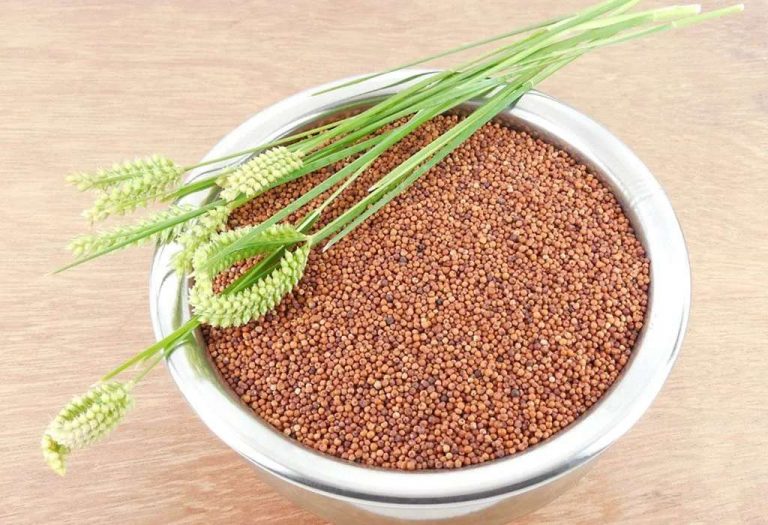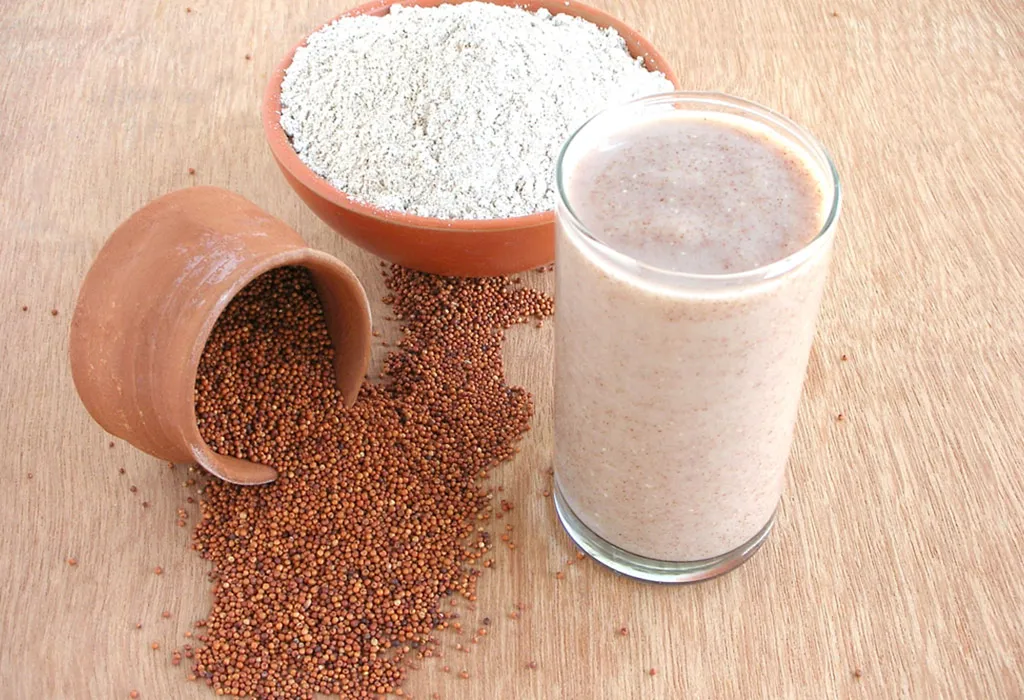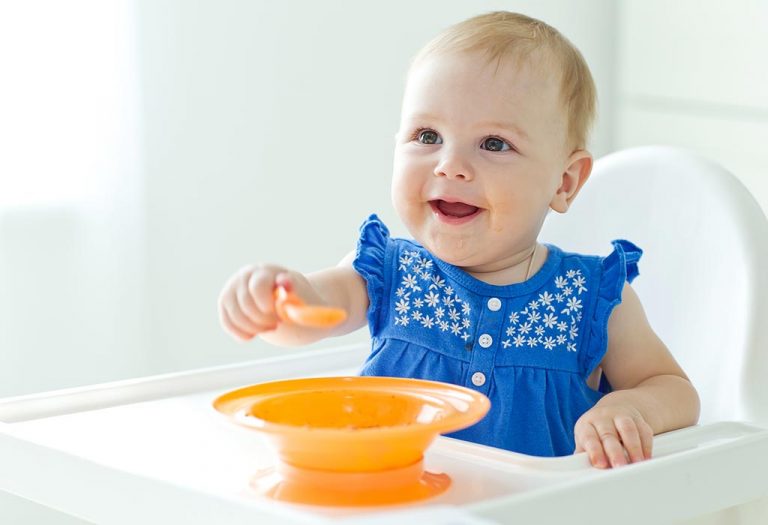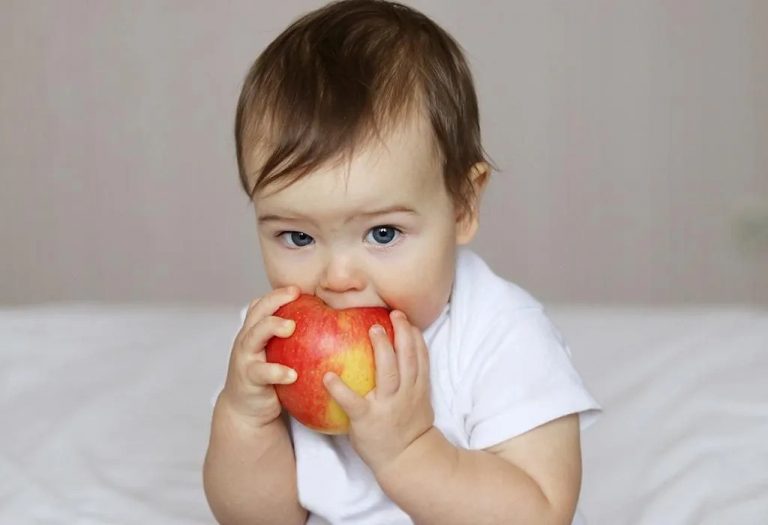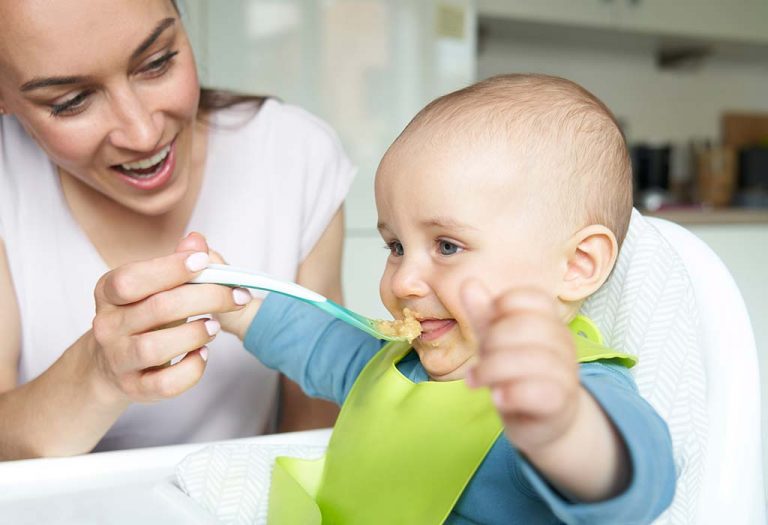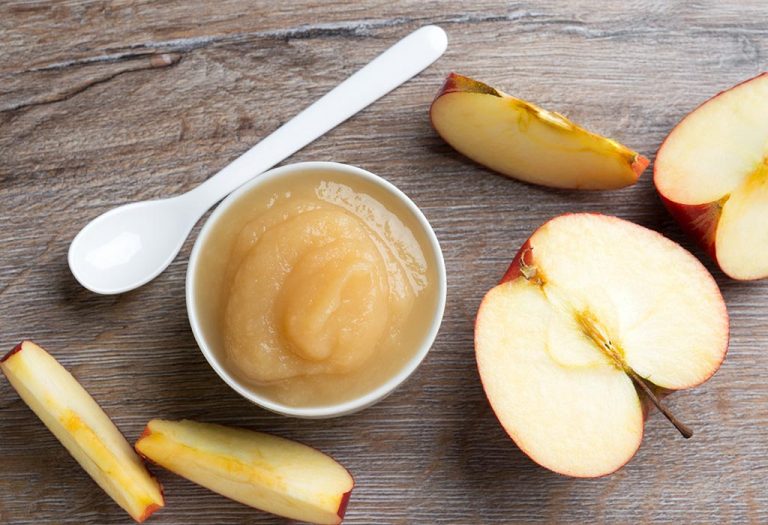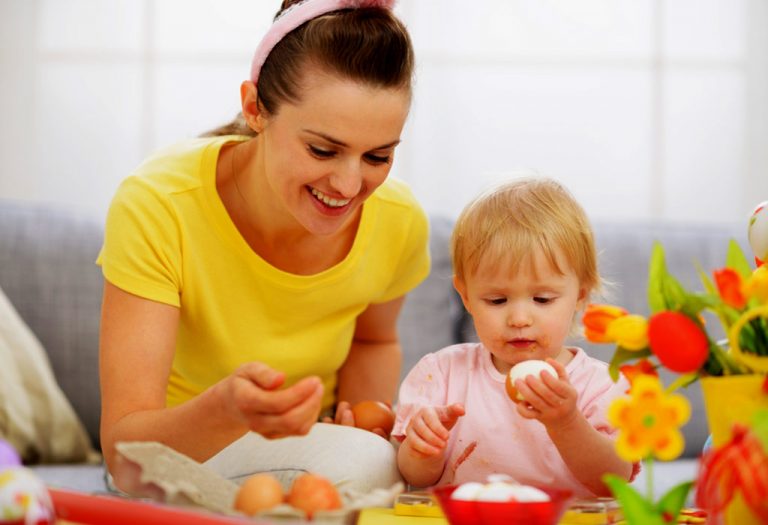Ragi for Babies – Amazing Health Benefits and Recipes

Creating a solid groundwork of wholesome dietary habits is paramount for nurturing a baby’s optimal growth and development from the very beginning. By instilling a regimen of nutritious foods early on, you lay the cornerstone for a lifelong commitment to well-being. Among the vast array of nutrient-rich options available, ragi emerges as a standout due to its multifaceted advantages. Bursting with essential nutrients like calcium, iron, and dietary fiber, ragi for babies stands as a stalwart addition to your child’s dietary repertoire, ensuring a robust framework for their ongoing journey towards health and vitality. Incorporating ragi into your baby’s diet not only promotes physical well-being but also fosters a positive relationship with food, setting the stage for a lifetime of healthy eating habits and overall wellness.
Video: Benefits of Finger Millet (Ragi) for Babies (Plus Healthy Ragi Recipes)
What Is Ragi?
Ragi, also known as finger millet or nachani, contains proteins, iron, and calcium in high amounts. India is a leading producer of ragi in the world. This whole grain contains important amino acids like phenylalanine, methionine, isoleucine, and leucine. Ragi can be cultivated even when there is a drought.
Nutritional Value of Ragi
Rich in essential nutrients such as calcium, iron, and dietary fiber, ragi is a versatile ingredient that can be incorporated into various dishes. Below is a table summarizing the nutritional value of ragi per 100 grams:
| Nutrients | Quantity |
| Energy | 378 kcal |
| Proteins | 11 g |
| Carbohydrates | 72.8 g |
| Fat | 4.22 g |
| Dietary fibre | 8.5 g |
| Iron | 3.01 mg |
| Sodium | 5 mg |
| Calcium | 8 mg |
| Potassium | 195 mg |
When to Introduce Ragi to Infants?
The best time to give ragi for babies is typically around six months of age when they are ready to start solid foods and have developed the necessary digestive capabilities. Introducing ragi at this stage can provide essential nutrients like calcium, iron, and dietary fiber, supporting the baby’s growth and development. It’s advisable to consult with a pediatrician before incorporating ragi into your baby’s diet to ensure it aligns with their individual needs and developmental stage.
Health Benefits of Ragi for Infants
One question that often comes to a parent’s mind is—Is ragi good for babies? The answer to this is, yes. Ragi is packed with essential nutrients and is a healthy addition to the diet of babies, right from the age of six months. Here are some of the ragi benefits for babies your child can derive from this super cereal:
1. Rich Source of Calcium
The calcium content of ragi is extremely high, and hence, is beneficial for your child’s developing bones. It helps mitigate the risk of bone fractures and eliminate the need for calcium supplements. Apart from that, ragi also improves the production of blood in the human body.
2. Fibre Aids Digestion and Makes Babies Feel Full
The amount of dietary fibre in ragi promotes digestion and helps your child stay full for a longer time. The amino acids present in ragi do away with the excess fat around the liver and reduce cholesterol levels in a child’s body, thus, keeping obesity at bay.
3. Rich Source of Natural Iron
Natural iron present in ragi can help prevent anaemia in children. Sprouted ragi contains a good amount of Vitamin C, which aids in better absorption of iron. Ragi, due to its high nutritional content, prevents malnutrition in babies.
4. Is a Natural Relaxant
The presence of a significant amount of antioxidants in ragi helps relax the body and prevent problems, such as insomnia, anxiety, and headaches in children.
5. Improves Skin and Hair
The presence of the amino acid methionine helps promote healthy skin and hair in your child.
6. Boosts Immunity
Ragi contains essential nutrients like vitamins and minerals that support the immune system, helping infants fight off infections and illnesses more effectively.
7. Supports Healthy Weight Gain
The balanced nutritional profile of ragi, combined with its high fiber content, can aid in healthy weight gain for infants, ensuring they achieve appropriate growth milestones.
8. Enhances Brain Development
The amino acids and nutrients in ragi contribute to healthy brain development in infants, supporting cognitive function and overall neurological health.
Side Effects of Ragi for Babies
While ragi is generally considered safe and nutritious for babies, it’s essential to be aware of potential side effects that may arise, particularly if introduced too early or in excessive quantities. Following are the disadvantages of ragi for babies.
1. Digestive Issues
Introducing ragi too early or in large amounts may cause digestive discomfort such as gas & bloating, or constipation in some babies.
2. Allergic Reactions
Although rare, some infants may develop allergies to ragi, leading to symptoms like skin rashes, itching, or difficulty breathing.
3. Phytic Acid Content
Ragi contains phytic acid, which can interfere with the absorption of certain minerals like iron and zinc. Excessive consumption may lead to nutrient deficiencies over time.
4. Oxalate Content
Ragi also contains oxalates, which in large amounts, can contribute to the formation of kidney stones in susceptible individuals, although this is rare in infants.
5. Risk of Choking
Feeding ragi in the form of coarse flour or improperly prepared porridge may pose a choking hazard for babies, especially those who are not yet adept at chewing and swallowing solid foods.
Video: How to Make Ragi Porridge for Babies?
Ragi Recipes for Your Baby
Nothing beats making some nutritious food for your little one. Always clean ragi by washing it well with water. From ragi porridge for babies to ragi banana pancakes, there’s a lot you can do with this versatile food. So check out these ragi recipes for infants.
1. Homemade Ragi Porridge Recipe
Here is a ragi porridge recipe for babies.
Ingredients:
- 1 cup of water
- 1 tsp of ghee
- ½ cup of milk
- 2 tsp of ragi powder
- A pinch of grated jaggery
Preparing Porridge Powder:
- Drain the ragi grains and dry them in the sun by spreading them out on a clean cloth.
- After the ragi is fully dry, roast it on a medium flame till there is an aroma.
- Place the roasted ragi on a plate and let it cool.
- Grind the cooled ragi to a fine powder.
- Store the powder in an airtight container.
- Use as per your requirement.
How to Make Ragi Porridge:
- Place a pan on the flame and heat the ghee in it.
- Then, add two teaspoons of ragi powder and sauté it lightly.
- Mix in one cup of water and half a cup of milk.
- Keep stirring, until the flour blends well with the milk and ensure there are no lumps.
- Sprinkle the grated jaggery, and mix till it dissolves completely.
- Switch off the heat when the desired consistency is obtained.
2. Ragi Malt Recipe
This wholesome ragi malt is a nutritious drink for babies and toddlers.
Ingredients:
- 1 cup of ragi
- 2 cups of water
- Milk
- Jaggery or sugar (as per taste)
How to Make Ragi Malt:
- Soak a cup of ragi in two cups of water for a few hours.
- Drain the soaked ragi and grind it by adding a little water to extract the juice.
- Mix the ragi juice with milk in a saucepan.
- Add jaggery or sugar to taste.
- Cook the mixture over medium heat, stirring continuously until it thickens.
- Adjust the consistency by adding more milk if needed.
- Once cooked to the desired consistency, remove from heat and let it cool.
- Serve the ragi malt warm or chilled as a nutritious drink for your little one.
3. Ragi Idli Recipe
This wholesome ragi idli recipe is ideal for babies above seven months of age.
Ingredients:
- 1/2 cup of ragi
- 1/4 cup of urad dal
- 1/4 cup of poha (flattened rice)
- 1 grated carrot
How to Make Ragi Idli:
- Thoroughly wash and soak the urad dal in water for eight to nine hours.
- Thoroughly wash and soak the poha in water for three to four hours.
- Grind/ blend the soaked urad dal until you get a smooth paste. Add water if required.
- Add the soaked poha and grind/blend until smooth.
- In a separate bowl, take some ragi flour, add water as required, and mix until you get a smooth paste.
- Pour the urad dal and poha batter into this and mix well.
- Cover the mixture and let it ferment overnight.
- The next morning, add a grated carrot to the batter and mix. The idli batter is now ready to be used.
- Coat the idli moulds with a drop of oil and pour a spoonful of the batter in each one.
- Steam for 10-15 minutes in an idli cooker.
4. Ragi Banana Pancakes
These nutritious pancakes are a delightful way to incorporate ragi into your baby’s diet.
Ingredients:
- 1 ripe banana
- 2 tablespoons of ragi flour
- 1 tablespoon of whole wheat flour
- 2 tablespoons of milk
- A pinch of cinnamon (optional)
How to Make Ragi Banana Pancakes:
- Mash the ripe banana in a bowl until smooth.
- Add ragi flour, whole wheat flour, and milk to the mashed banana.
- Mix well until you get a smooth batter. Add a pinch of cinnamon for flavor if desired.
- Heat a non-stick pan over medium heat and lightly grease it with oil or ghee.
- Pour a small amount of batter onto the pan to form small pancakes.
- Cook until bubbles form on the surface, then flip and cook the other side until golden brown.
- Serve the ragi banana pancakes warm, either plain or with a drizzle of honey or fruit puree for added sweetness.
Precautions to Take
As with all things related to your child, hygiene and cleanliness assume importance when you make and feed your child homemade ragi porridge. Ensure that all the utensils used for feeding are thoroughly sterilised before you start feeding. Also, make sure your hands are scrubbed with soap before you begin.
FAQs
1. Can I give ragi to my baby if they have allergies?
While ragi allergies are rare, it’s essential to monitor your baby for any allergic reactions after introducing ragi into their diet. If your baby has a known allergy to gluten or any other grain, consult with your pediatrician before introducing ragi. Always start with a small quantity and observe your baby closely for any adverse reactions.
2. How often can I feed ragi to my baby?
You can feed ragi to your baby 2-3 times a week initially, gradually increasing the frequency as they grow older and their digestive system matures. It’s essential to maintain a balanced diet for your baby, so include a variety of other nutritious foods alongside ragi to ensure they receive a wide range of nutrients for optimal growth and development.
3. Can I give ragi to my baby if they have constipation issues?
Ragi is rich in dietary fiber, which can help regulate bowel movements and alleviate constipation. However, if your baby experiences constipation after consuming ragi, it’s advisable to reduce the quantity or temporarily stop until the issue resolves. Ensure your baby stays hydrated and consult with your pediatrician if constipation persists.
No other cereal can even come close to the type of health benefits that ragi offers a growing child. The sooner you make ragi a part of your child’s daily diet, the sooner he will start reaping these advantages. Ragi powder, whole ragi, sprouted ragi, and ragi flour are just some of the options you can choose from, depending on the recipe you want to try out.
Disclaimer: This information is just a guide and not a substitute for medical advice from a qualified professional.
References/Resources:
1. Millet, raw; Food Data Central; U.S. Department of Agriculture; https://fdc.nal.usda.gov/fdc-app.html#/food-details/169702/nutrients
2. Ellis. E; Do’s and Don’ts for Baby’s First Foods; Academy of Nutrition and Dietetics; https://www.eatright.org/health/pregnancy/babys-first-foods/dos-and-donts-for-babys-first-foods; December 2019
3. Devi. P, Vijayabharathi. R, Sathyabama. S, et. al.; Health benefits of finger millet (Eleusine coracana L.) polyphenols and dietary fiber (Journal of Food Science and Technology): a review; National Library of Medicine; https://www.ncbi.nlm.nih.gov/pmc/articles/PMC4033754/; June 2014
4. Shobhana. S, Krishnaswamy. K, Sudha. V, et. al.; Finger millet (Ragi, Eleusine coracana L.): a review of its nutritional properties (Advances in Food and Nutrition Research), processing, and plausible health benefits; National Library of Medicine; https://pubmed.ncbi.nlm.nih.gov/23522794/
5. Patil. P, Singh. S, Patel. P; Functional properties and health benefits of finger millet
(Eleusine coracana L.): A review; The Journal of Phytopharmacology; https://phytopharmajournal.com/assets/pdf_files/Vol12_Issue3_08.pdf; June 2023
6. Bisht. K, Gudadhe. N, Raut. A, et. al.; Nutritional Composition, Health Benefits, Production, Processing and Marketing of Finger Millet; ResearchGate; https://www.researchgate.net/publication/374730425_Nutritional_Composition_Health_Benefits_Production_Processing_and_Marketing_of_Finger_Millet; October 2023
7. Infant and Toddler Nutrition; Centers for Disease Control and Prevention; https://www.cdc.gov/nutrition/infantandtoddlernutrition/index.html
Also Read:
Wheat for Babies
Green Beans for Infants
Brown Rice for Babies
Dalia for Babies
Was This Article Helpful?
Parenting is a huge responsibility, for you as a caregiver, but also for us as a parenting content platform. We understand that and take our responsibility of creating credible content seriously. FirstCry Parenting articles are written and published only after extensive research using factually sound references to deliver quality content that is accurate, validated by experts, and completely reliable. To understand how we go about creating content that is credible, read our editorial policy here.






